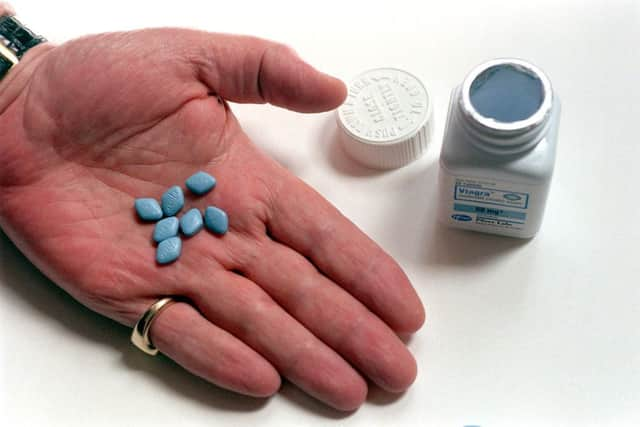Viagra and divorce fuel STDs in over-45s


Better health later in life, the availability of drugs which assist male sexual performance and a higher divorce rate are the key factors behind the massive rise in middle-aged and older Scots diagnosed with sexually transmitted diseases (STDs).
Far higher numbers of under-25s contracted STDs over the same period, but the increase was well under 50 per cent.
Advertisement
Hide AdAdvertisement
Hide AdAnd in the aftermath of the festive season, Scots of all ages are being reminded that a drunken indiscretion could leave them with an unwanted “present”.
The figures were released under Freedom of Information by the Information Services Division of the Scottish NHS.
They show that over-45s suffering from the three most common STDs – herpes, chlamydia and gonorrhoea – rose from 256 in 2003 to 631 in 2012, an increase of 146 per cent.
The number of under-25s suffering from the same diseases went from 10,355 to 15,135. Although the numbers are much higher than for over-45s, the percentage increase was just 46 per cent.
The percentage increase for the population as a whole was 43 per cent over the ten-year period, with herpes seeing the highest rise.
Experts have issued a warning to Scots and in particular to the over-45 age group who should “re-educate” themselves on sexual health.
Although all three diseases can be treated, if left for too long some can cause sufferers to become infertile. They can also causing damage to the joints, pelvis and heart, as well as making victims more susceptible to other infections like meningitis.
Karen Lorimer, a sexual health expert at Glasgow Caledonian University, said there are many factors which should be considered when determining why more adults are being diagnosed with STDs. These include a healthier ageing population, along with a growing divorce rate.
Advertisement
Hide AdAdvertisement
Hide AdEarlier this year, it was revealed that Scots were on average living six years longer than in the 1980s. Along with this, it was reported that those suffering from coronary heart disease had fallen by 2 per cent, while strokes were down by 3 per cent.
Although the divorce rate has dropped slightly in the most recent years, Ms Lorimer suggested that a peak in the early 2000s could be responsible for a continuing increase in older adults being diagnosed with STDs.
She said: “Sometimes you think of this as something that affects younger, but we have heard of older people risk-taking too.”
Natika Halil, of the sexual health charity FPA, said: “This suggests condom use is on the wane and many young people may be relying on treatment rather than prevention – perhaps the high-profile campaigns which drove a significant upsurge in the use of condoms in the 1980s and 1990s have been forgotten.”